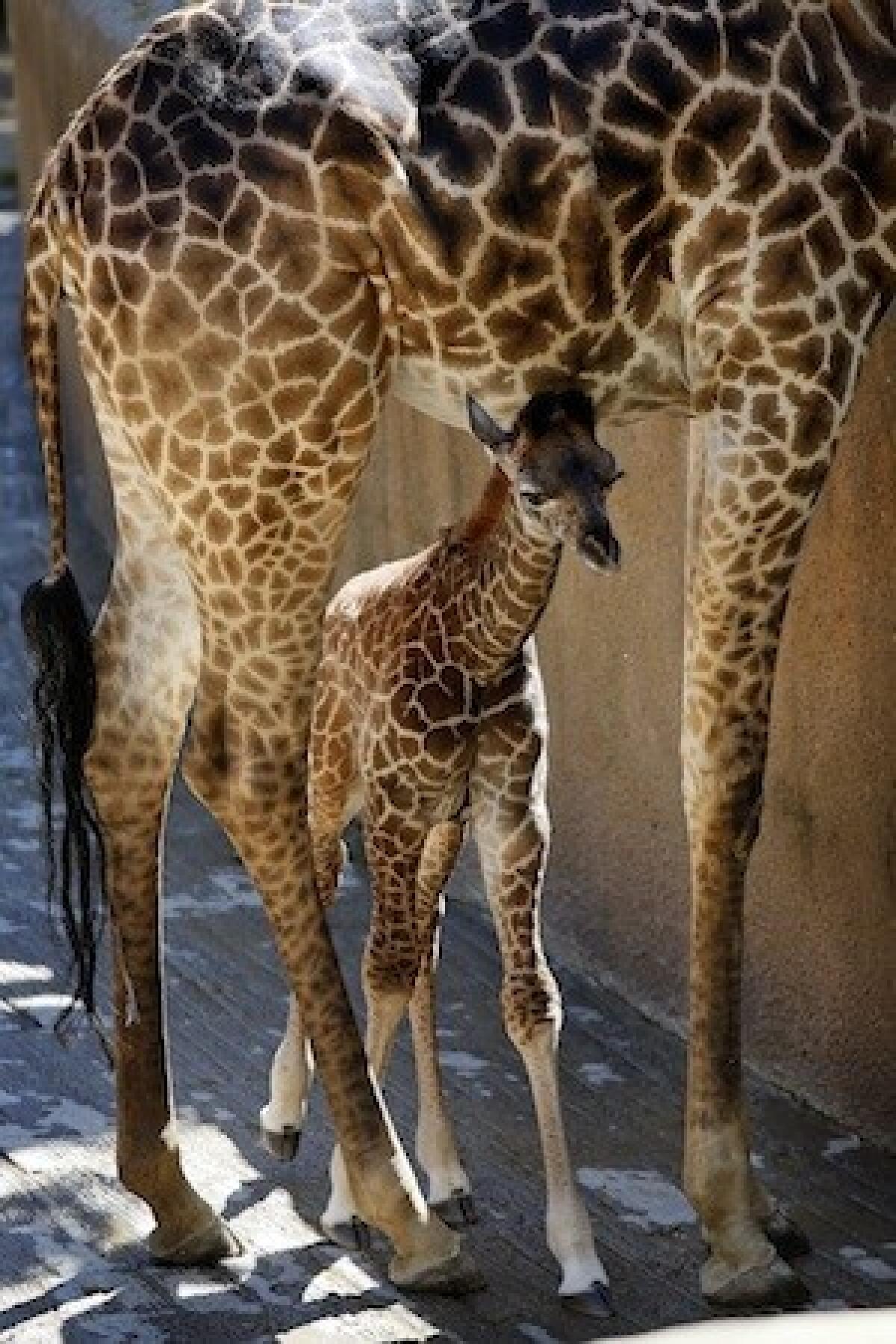How invasive plants at LAX feed giraffes and elephants at L.A. Zoo

- Share via
The bad news: Exotic acacia trees pose a pesky problem for native coastal dunes at Los Angeles International Airport. The good news: Giraffes like them -- a lot.
Now a long-term partnership that began last fall between the airport and the L.A. Zoo keeps invasive species out of L.A.’s landfills and gives zoo animals a leafy treat.
“At first I thought, ‘Can we bring the giraffe to the sand dunes?’” environmental specialist Peggy Nguyen said Wednesday in describing how the plan took root. “That idea wasn’t so great because [the trees] would be spread all over the dune.”
Nguyen then called L.A. Zoo officials who, it turns out, were in need of a steady source of acacia. Once a week, zoo workers come to the 48-acre dune site at the airport’s northwest corner to trim acacia trees and collect leafy green branches that become food for giraffes, elephants, rhinos and other animals.
The acacia isn’t exactly what the animals would have eaten in their homeland. The stock comes from Australia, not Africa, but animals still like it.
LAX is working on removing acacia plants and trees under a $3-million improvement project at what’s left of the El Segundo Dunes. The goal is to return the area, which was deemed a nature preserve in 1994, to its original state. It’s not open to the public because it still houses navigation aids used by the airport.
Once this project is complete, the airport plans to embark on the bigger task of removing acacias from more than 300 acres at LAX, part of which provides habitat for the endangered El Segundo blue butterfly. And that means a lot more zoo snacks.
“We can feed a lot of giraffes for a long period of time,” airport environmental manager Robert Freeman said.
[email protected]
Follow us on Twitter @latimestravel, like us on Facebook @Los Angeles Times Travel.
More to Read
Sign up for The Wild
We’ll help you find the best places to hike, bike and run, as well as the perfect silent spots for meditation and yoga.
You may occasionally receive promotional content from the Los Angeles Times.







